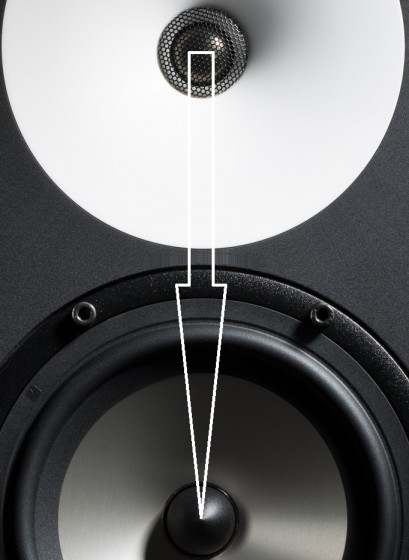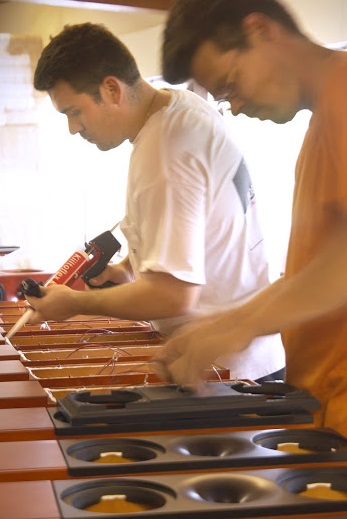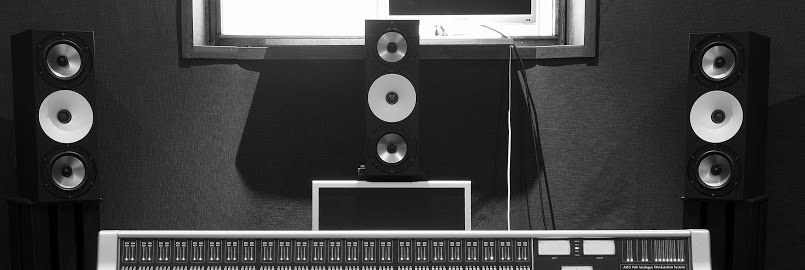Interview with Anssi Hyvönen from Amphion Loudspeakers
Q: Hey Anssi, you’re the founder of Amphion, the new member of our speaker assortment. Can you tell us something about the idea behind Amphion?
 A: When we started developing our pro range we never wanted to make just a speaker. Probably due to my background during the various stages of development we analyzed the products not based on how they sounded, but what the makers produced with them. Finland is a great market to do something like this as due to the language 80% of music is produced locally.
A: When we started developing our pro range we never wanted to make just a speaker. Probably due to my background during the various stages of development we analyzed the products not based on how they sounded, but what the makers produced with them. Finland is a great market to do something like this as due to the language 80% of music is produced locally.
I always felt we need to produce good sound for all playback devices. Therefore my reference systems include also the internal speakers of my Macbook pro and a standard radio in our company’s Renault Traffic. When I heard something that worked due to small size I could always find the person who made it to check what kind of combinations were used in the production process. It became evident that changing speakers had a radical effect on the end result even if the person and the room remained unchanged.
We wanted to make a tool which would allow users to tackle the challenges of modern sound making. The world has changed very quickly. The current playback environment is very fragmented and I feel that the old tools have often problems with translation to modern playback devices. I classify playback devices into 3 categories hifi (conventional stereo, car radio), lo-fi (desktop radio, mass market earbuds, TV speakers) and no-fi (internal speakers in mobile phones, iPads, laptop computers. However how limited or wide in frequency the playback devices have one thing in common: In order to produce at least decent clear sound to all of these devices getting the midrange 100% right is crucial.
Q: How do you achieve this in your speaker designs and what makes them so special?
A: We believe that a good loudspeaker should be as faithful to the original signal as possible. It should reproduce the signal without adding anything or leaving anything out and without changing it. As we say it should be Just Music. Nothing more. Nothing less. As one can never isolate a loudspeaker from the room it is in, a good speaker should behave in predictable and stable manner in all rooms.
When you read about loudspeakers the main emphasis tends to be on electrical aspects of them i.e. crossovers, the quality of electrical components, possible use of DSP etc. I believe this comes from the fact that most manufacturers view loudspeakers mainly as electrical devices. In photography the quality of your picture is ultimately defined by the quality of the lens and not the camera body you use. I believe the same applies to modern sound making: Your acoustical lens i. e. your monitor selection will have the most effect on your results. This is the reason why we are trying to keep your monitors as pure, distortion free and highly resolving as possible. For us a loudspeaker is an acoustical device. Whatever we can achieve acoustically, we do not have to try to fix electrically.
The biggest challenge of speaker design is integrating the drivers into one cohesive unit. Often they have very different sonic and physical properties. When doing this is it is not sufficient to simply come up with good measurements, we will need to take the human hearing into consideration.
Q: What do you mean by that, can you give us an example?
A: Human hearing is not linear, it is most precise between 2 – 5 KHz. Using simple common sense, would it not make sense to place the seam, i.e. the crossover point outside this area. The sofa manufacturers will never have the seam running in the middle of the cushion. Why should we? Ear’s sensitivity actually goes down quite a bit when we move outside the critical hearing range. While we could never “hide” a 2.5-3.5 K Hz crossover we can do that when the crossover is 1600 Hz. Why do most speakers have their crossovers inside that area where we hear best? Please do not ask me. Ask them. I simply do not understand that.
The only correct way of reproducing sound is point source. Due to the low crossover point our speakers act as point sources even if they do not look like them.
Let`s calculate the wavelength at 1600 Hz. At 20 degree Celsius we will land on 21,45 cm (see http://www.1728.org/freqwavf.htm).
At 3000 Hz this is 11.44 cm. 
Now take a ruler and check what is happening with your speakers. Normally you can fit this 11.44cm between the center points of your drivers which means that your ear picks up two separate sound sources and your auditory system will never be fooled to think that you are listening to natural sound.
If the wavelength is longer than the distance between the center points of the drivers your ears cannot localize the separate drivers but sense them as one big cohesive unit. This happens with our speakers with all the models as wavelength at 1600 Hz is as long as 21.46 cm.
Q: Very interessting! Can you give us some information about the materials you’re using to manufacture the speakers?
A: Due to having a bit different angle into the speaker design we cannot use off-the-shelf drivers. They may look similar to those you can purchase from the driver manufactures, but they are not the same.
 Enclosures are made of MDF (medium density fibre board). The cabinets are made in Finland in a separate factory 40 kilometers from us. This allows us to keep a tight check on quality. They very much look like any square box, but the internal turbulence and airflow properties have been modeled carefully. In order to achieve high mass and high precision for the waveguide we are using high quality yet expensive priced composite material.
Enclosures are made of MDF (medium density fibre board). The cabinets are made in Finland in a separate factory 40 kilometers from us. This allows us to keep a tight check on quality. They very much look like any square box, but the internal turbulence and airflow properties have been modeled carefully. In order to achieve high mass and high precision for the waveguide we are using high quality yet expensive priced composite material.
Tweeter dome is 25 mm titanium. Woofer cone material is aluminium. Again due to the low crossover and the filter type we can pretty much just use the good properties of aluminum (light, rigid) and do have problems with materials ringing and break-up which would take place if we would be using them with conventional higher crossover points.
Basic specs for speakers available on http://www.amphion.fi/en/create/products/
Q: Can you describe your product line and the main differences between them (i’ve seen that One15 and One18 are a quite different speakers)?
A: One12 we see as being a mobile system or something one could use as ultra nearfield.
One15 is mainly a mix tool, or something a bit more general for small rooms.
One18 is a general work horse that allows you to track & mix and master even in pretty small rooms.
Two18 is a One18 in stereoids, which likes a bit bigger rooms, but also rewards the efforts one puts into it.
Q: Could you talk a little about yourself, your company and its philosophy?
 A: I am a sound man. Emotion creating sounds, including those of nature, are a source of huge inspiration and enjoyment for me. I tend to half jokingly say that I am not interested in how things sound, but I am super interested in how they make me feel. I presume this is also the reason why we focus very much on getting the feel of the product right. Naturally the product must measure correctly, but that is only a starting point. Rupert Neve, who should understand something about audio put it quite well: “The excellence of measurements does not automatically mean excellence in performance”.
A: I am a sound man. Emotion creating sounds, including those of nature, are a source of huge inspiration and enjoyment for me. I tend to half jokingly say that I am not interested in how things sound, but I am super interested in how they make me feel. I presume this is also the reason why we focus very much on getting the feel of the product right. Naturally the product must measure correctly, but that is only a starting point. Rupert Neve, who should understand something about audio put it quite well: “The excellence of measurements does not automatically mean excellence in performance”.
We have noticed that a human being is amazingly accurate in knowing when things are “there”. When we are doing the final voicing on the product it is easy to spot this moment, when the speaker is ready the hairs in my arms start standing up. Many put faith in measurement devices. Nothing wrong with them, but we really should trust your senses more. The magic of music is not a frequency curve.
I have been creating high quality playback systems since I was 14 years old. 16 years ago I spoiled a perfect hobby by turning it into a profession. And I love every minute of it! It is absolutely fabulous to work with talented and passionate people towards a common goal which is allow people to experience the beauty of music and be moved by it every day. The past 3 years have been especially exciting, as lot of time and effort has been focused on making the future tools for modern sound engineers. Lot of things in the music industry have changed and your most important tool after your ears i.e. your monitor must also adapt to those changes.
Q: Thanks Anssi for this revealing interview!
Here you can find all our Amphion products




Schreibe einen Kommentar
Du musst angemeldet sein, um einen Kommentar abzugeben.